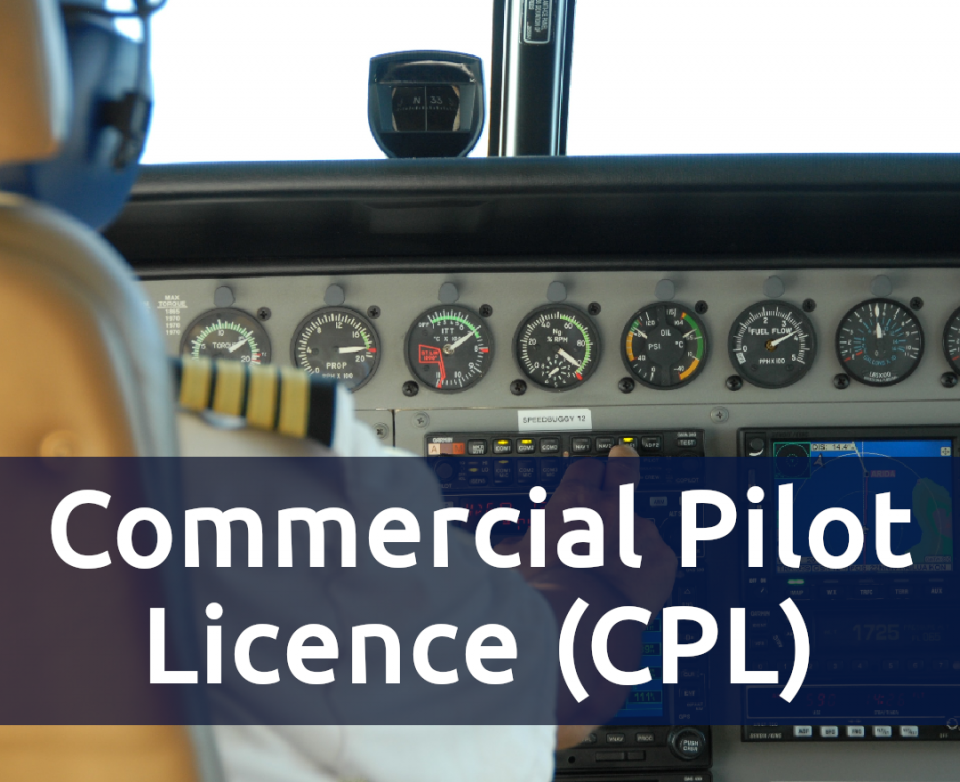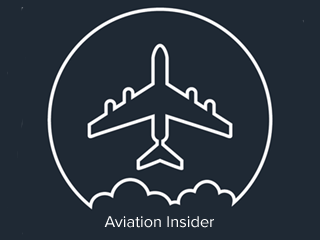Our full list of CPL providers can be found here
About the course
A commercial pilot licence will allow you to undertake commercial air operations and carry fare paying passengers and cargo, The holder can also exercise the privileges of a PPL and act as PIC in any non-commercial air operation. A CPL is required in order to become an Airline Pilot. Once achieved, a CPL allows the bearer to operate an aircraft commercially, as Pilot In Command (PIC) in any single-pilot aircraft and also as Co-Pilot, in Visual Meteorological Conditions (VMC). A CPL can be added to with an instrument rating to allow operation in Instrumental Meteorological Conditions (IMC). The CPL is a licence and therefore does not expire, however the ratings which are endorsed on it will need renewing, usually every 12 months.
The course can be completed either full time or part time, depending on which training route is taken; Integrated or Modular. Upon completion of the required hours and training, there will be a flying skills test which must be passed in order to attain the CPL (like a driving test).
Course costs can also vary depending on the training provider and what packages are available. Our bespoke database will allow you to compare providers, courses and prices.
Course Requirements
- Successful completion of the ATPL Theoretical Knowledge exams to at least CPL stage.
- If studying via the Modular route, you must have a PPL and have acquired 150 hours flight time prior to starting the CPL course. This will be a mixture of dual and Pilot In Command (PIC).
- As Integrated training is done ab-initio, any pre-requirements will be built into the course and managed by your training provider. All required hours will be completed prior to licence application.
Course structure and Completion
- The time period depends on lesson scheduling, student competence and weather, but the CPL module can usually be done in approximately 2 weeks.
- To gain a CPL on an Integrated Course, the following hours must be completed: 80 hours of dual instruction and 70 hours PIC. Within these 2 categories will different designations of hours:
- Cross-country; 20 hours of PIC, of which includes a 300nm qualifying cross-country (QXC) that also includes full stop landings at two airfields other than the airfield of departure.
- Night Flying; 5 hours, of which 3 are dual instruction, 1 hours of cross-country and 5 solo take-offs and full stop landings.
- Instrument time: 10 hours of dual instruction, of which 5 can be instrument ground time done in an approved simulator.
- 5 hours in an aircraft that is certified for at least 4 persons, has a variable pitch propeller and retractable landing gears.
- To gain a CPL on a Modular Course, you will have already acquired the pre-required 150 hours as mentioned in the previous section, the following hours must be completed:
- 25 hours of dual instruction that includes; 10 hours of instrument time and 15 hours of visual flight time. 5 of the instrument hours can be done in an approved simulator. If an IR has already been acquired prior to the CPL course, then 10 of those instrument hours can be used towards the CPL instrument requirements.
- At least 5 of the hours in a 4-seat, variable-pitch propeller aircraft with retractable landing gears.
- If not in possession of the previously mentioned Night Rating, then this would be done as well.
- Once you have completed all of the training and hours, provided you and your instructor feel you are ready, then you can go for your CPL Skills test, which lasts approximately 2 hours and tests a variety of skills and abilities.
If you hold a licence at present or have flying experience, you may be able to apply credit towards the flying and theoretical knowledge training for the issue of a licence or rating. These include: Licences/Ratings from another ICAO member state, UK Military hours and CPLs from a different category of aircraft. Please enquire with your shortlisted training providers as this will be done on a case by case basis.
What To Look For In A Training Provider
- EASA or CAA Registered.
- Well maintained and serviceable aircraft, as well as availability, scheduling and regularity of lessons.
- Qualified instructors available.
- Pass rates of previous students at the training provider.
- Reviews from past students are important, to get a feel of all aspects of the flight school and course.
- Compare costs between schools to ensure it suits your budget.
- Student support to ensure that your progression throughout the course is as smooth as possible.
- Ask for transparency on prices and packages, i.e inclusion of instructor fees, landing fees, fuel etc
For a more in-depth guide on what to look for in a training provider, click here.
Our full list of CPL providers can be found here
Equipment
- Headset, VFR Chart, Charts for appropriate airfields, Stationary including chart-pens, chart-ruler, protractor and compass, CRP-5, DP-1 ruler, flight bag, kneeboard, calculator.
- Hi-Visibility jacket, fuel drainer, small torch.
Tips and Advice
- Good Airmanship from the start is key and should be practiced throughout your flying career.
- Prepare well for each flight. Make sure that you fully understand your lesson briefs and have checked the weather, and understand aircraft checklists and SOPs (Standard Operating Procedures). Learn as much as you can from each lesson and review it during the post-flight debrief and before your next lesson.
- CPL is of course an advanced step up from PPL level and so your standards of practice and discipline should advance also in order to get the most out of training and pass the Skills Test.
- The Skills Test is quite busy as there is a lot to get through in a relatively short space of time, especially if you are doing a Multi-Engine CPL course. Acquire a copy of the test structure from your instructors and familiarise yourself with it as best you can so that you know what to expect.
- Complete your aircraft checks properly. It's better to spot a fault on the ground rather than in the air!
- ASK! ASK! ASK! . If you are unsure about anything or have any queries, ask your instructors who should be more than happy to help.
- Know the circuit patterns and procedures for possible airfields you will be taken to. For Multi-Engine CPL, you will also be tested on EFATOs (Engine Failure After Take-Off) and OEI (One Engine Inoperative) Asymmetric circuits. Ensure that you know the new pitch and power settings and circuit procedures for these so that you are not caught out.
- For EFATOs, ensure that you practice and are comfortable with the procedures as this is a highly important part of multi-engine training. Remember to stay on top of your rudder control as well as your pitch and roll control. Follow the flows correctly to ensure safety and efficiency.
- During the instrument training in lessons and test section, be clear and confident in your methods, i.e. Position Fix, Beacon Tracking, Compass Turns, IMC Entry etc. Practicing the elements which you learn in the lessons and reviewing them will ensure that you go into the test backing yourself to succeed. Using a flight simulator at home can also help you practice procedures.
- Form strict discipline from the start, as it will stand you in good stead for the rest of your flying career, especially if you choose to transition to commercial flying. Familiarise yourself with and learn the procedures for flight.
- Practice your ‘RT’ calls and understand the standards using CAP413
- Do your mass & balance and performance for your flight as this is a safety regulation.
- Ensure you are confident with you Navigation skills and track error correction
- Adopt good eating and resting habits by ensuring you have a nutritious meal around 1-2 hours before flying, and be well rested. Also make sure you have water and snacks in your flight bag.
Common Mistakes
- Poor preparation for your written exams and flying sessions.
- Not managing workload properly and getting overloaded or distracted. Try and prioritise tasks and approach each one in a calm and collected manner. This will come with experience and good practice.
- Not knowing Pitch & Power settings, or Speeds off by heart. This doesn't take long at all to commit to memory, but will prove crucial while flying.
- Getting confused with Asymmetric handling and flying if on a Multi-Engine aircraft.
- Altitude busts and airspace infringement. Ensure high levels of flight parameter monitoring and situational awareness at all times.
- Misjudging the weather and having to return very soon after departure.
- Misidentifying ground features during a navigation, or incorrectly calculating Cross Track Error.
- Not knowing the correct RT calls. Ensure you know the standard calls and transmissions.
- On a skills test, it is understood that the final half an hour can be a dangerous period where concentration can lapse due to slacking, ‘taking the foot off the gas’ and succumbing to ‘get-home itis’. Keep your focus and concentration and don't get complacent or lazy.
Next Steps
- Instrument Rating - IR (Multi/Single Engine) (if not already done prior to the CPL)
- Multi Engine Piston Rating - MEP
- Commercial Pilots Licence
- AUPRT
- MCC / APS MCC
- Airlines/ Companies
Our full list of CPL providers can be found here



